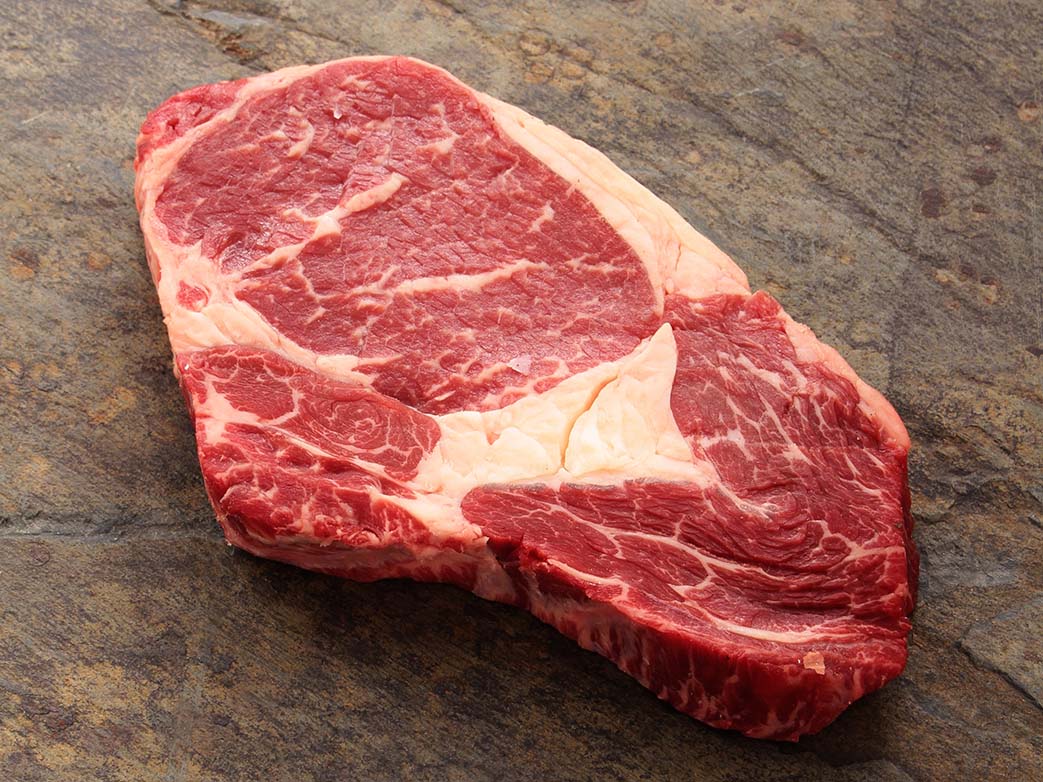
The marbling gives the ribeye steak its signature flavor. (Image: Colourbox)
The tender mouthfeel, the juicy taste and the pink hue: Two things make biting into a steak unique: The fibrous texture and the distribution of the fat tissue, also known as marbling. “Nature took its time to create bovine muscle tissue. Recreating it requires a great deal of research,” Hofmann says.
The only way to give a plant-based alternative a meaty feel is by biochemically engineering its protein structure to emulate that of meat. For his plant-based steak, Hofmann processes pea protein in his lab, together with flavours and spices, to replicate the fibrous structure of its animal counterpart. To this end, the protein dough is forced into a specially designed attachment while chopped carrot, pea and wheat fibres as well as some oil and water are added.
Hofmann’s plant-based alternative substitutes the fat tissue that characterises steak with a simple oil in water emulsion to which additives such as vitamins and trace elements can be added. Since the emulsion’s fat content can be reduced significantly, the plant-based steak is not only more eco-friendly than the animal-based original, but healthier as well.
Chaotic fat fibres
Marbling is an important quality characteristic of steaks. If it is very strong – as in Japanese Kobe beef – the meat is considered to be of the highest quality. However, to artificially recreate marbling is anything but simple.
“You have to imitate something highly irregular. Because when we look at one half of a steak, it tells us nothing about what the other half looks like,” Hofmann explains. Only products that take into account the randomness of nature can replicate the unique taste and mouthfeel of steak.